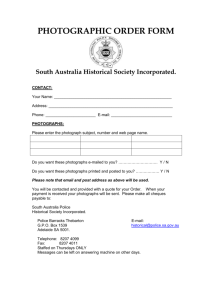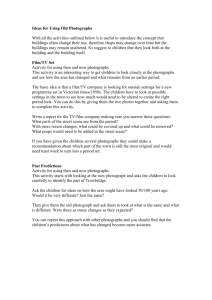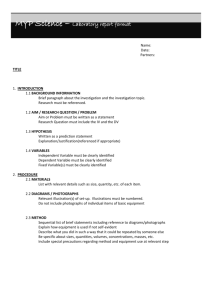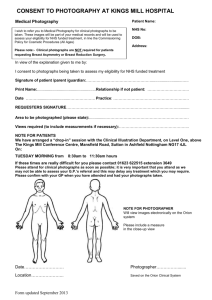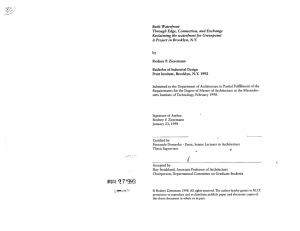MoreAmerican - WordPress.com
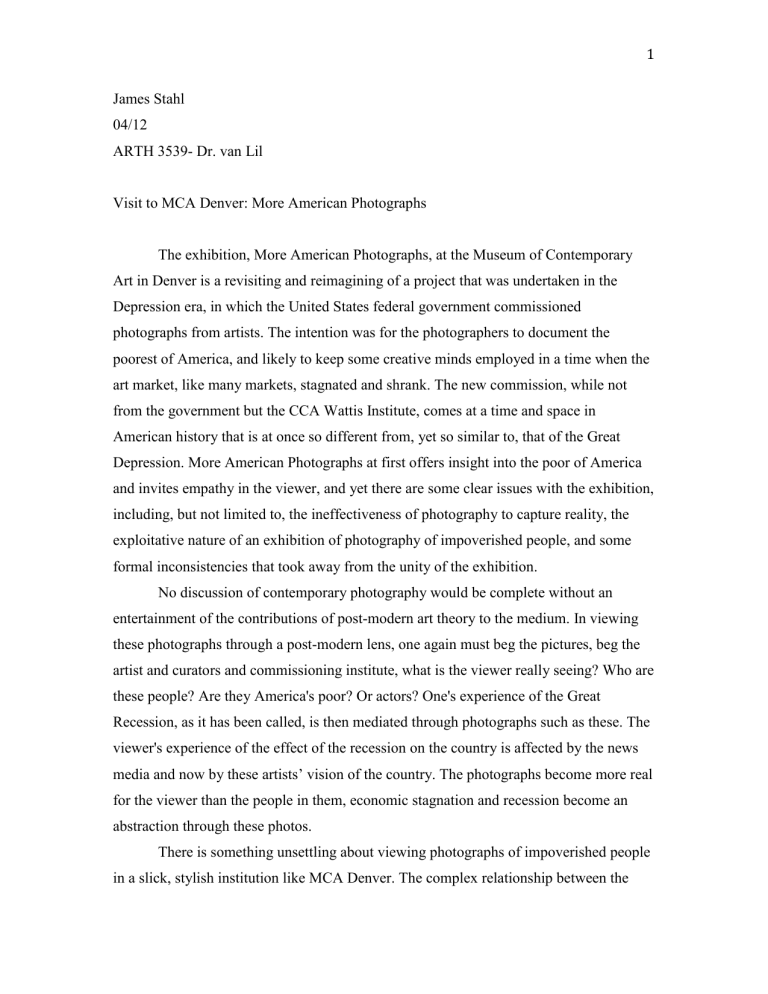
1
James Stahl
04/12
ARTH 3539- Dr. van Lil
Visit to MCA Denver: More American Photographs
The exhibition, More American Photographs, at the Museum of Contemporary
Art in Denver is a revisiting and reimagining of a project that was undertaken in the
Depression era, in which the United States federal government commissioned photographs from artists. The intention was for the photographers to document the poorest of America, and likely to keep some creative minds employed in a time when the art market, like many markets, stagnated and shrank. The new commission, while not from the government but the CCA Wattis Institute, comes at a time and space in
American history that is at once so different from, yet so similar to, that of the Great
Depression. More American Photographs at first offers insight into the poor of America and invites empathy in the viewer, and yet there are some clear issues with the exhibition, including, but not limited to, the ineffectiveness of photography to capture reality, the exploitative nature of an exhibition of photography of impoverished people, and some formal inconsistencies that took away from the unity of the exhibition.
No discussion of contemporary photography would be complete without an entertainment of the contributions of post-modern art theory to the medium. In viewing these photographs through a post-modern lens, one again must beg the pictures, beg the artist and curators and commissioning institute, what is the viewer really seeing? Who are these people? Are they America's poor? Or actors? One's experience of the Great
Recession, as it has been called, is then mediated through photographs such as these. The viewer's experience of the effect of the recession on the country is affected by the news media and now by these artists’ vision of the country. The photographs become more real for the viewer than the people in them, economic stagnation and recession become an abstraction through these photos.
There is something unsettling about viewing photographs of impoverished people in a slick, stylish institution like MCA Denver. The complex relationship between the
2 poverty captured in the photographs and the privilege that the audience enjoys is unavoidable. Complex too is the recognition received from and cost of the commissions in light of the poverty of the subjects. This relationship between subject and viewer and subject and photographer is best described as exploitative.
The word captured describes well the position of subject in these exploitative photographs. There exists in photography a strange power to possess the image of another person, and in turn possess an expression of them. The artist owns the visual representation of the person. The artist has converted their real life form into an art object with a value separate from any exchange between the sitter and the artist. Photography is a new colonialism when executed abroad, and a new slavery at home. This attribute of photography is something explored in the anthropological analysis of tourism. Dr. L.
Kaifa Roland, for example, argues in Cuban Color in Tourism and La Lucha , that tourism is a new form of colonialism, in that tourists go to another place and extract goods and services, and exert power over their hosts, and bring back things like photographs and souvenirs as evidence of their tours, and employ them in displays of cultural capital at home.
These artists, too, are transforming these peoples’ images into culturally important objects, which serve to benefit the artist, not the sitter. To illustrate, imagine a Western tourist with a camera in Jamaica and this tourist sees a Jamaican woman working and takes a photograph of her. By taking a photo of her, especially without permission, the tourist has created an object, the photo, which serves the tourist in that it is documentation of this tourist’s socioeconomic position, and documents their effective wielding of cultural capital, it transmits that the tourist is wealthy enough to tour, and so on, but serves the woman in the photo in no way, and in fact, her labor has been made entertainment for some one else. Such is the nature of the pieces in More American
Photographs .
The exhibition also raised some questions about the importance of curatorial decisions. Some photographs were framed while others were not. Larry Clark's Marfa,
Texas series was not framed, but stuck to the wall with pins. In total, the exhibition lacked a clear curatorial framework, whether intentional or not. Whether curatorial in nature, or a decision by the artist, the inclusion of text in Martha Rosler's Greenpoint
3 series seemed to lack any serious contribution, but serves well as a tool to discuss the difference between the unappealing use of text to provide context, in Rosler's series, and the simple, refined inclusion of the place name in the title cards for the Katy Grannan and
Andy Clark pictures. There is a balance between providing some context to the photographs and bashing the viewer over the head with paragraph long explanations of the gentrification of Greenpoint.
In total, the inclusion of the Greenpoint series was really not in the spirit of the rest of the exhibition. Brooklyn is not an especially economically depressed region of the country. Greenpoint, while still certainly not affluent, is moving in the opposite direction of places like Fresno, California, which has about ten percent more people living below the poverty line, or Bakersfield, California, which ranks dead last, out of one hundred of the largest American cities, in percentage of the population who holds at least a bachelor’s degree.
1 2 3
There was a distinct tension in the Katy Grannan pictures, a tension between the technical virtuosity of the pictures, their beauty, and their content, that made this series stand apart from the rest. These were photographs of people from economically depressed areas of California, and were not pretty, but beautiful, a distinction sometimes made by the writer Kent Haruf, in describing rural eastern Colorado. The distinction implies that while a place, or a photograph is not pretty in the regular sense, there is a beauty in some things that is separate from formal visual qualities. There was also a timelessness about these photographs, while they were taken last year, they were scenes of human life like those painted by the masters in the Renaissance, a rider on horse, stopping for a midday meal, or a portrait of a nameless man, his eyes red, his beard grizzled, a face expressive and yet without an expression, as in Untitled, Fresno,
California , 2011 a photograph strikingly similar to Velazquez's painting The Waterseller of Seville .
1 “Greenpoint, Brooklyn,” last modified April 29, 2012, http://en.wikipedia.org/wiki/Greenpoint,_Brooklyn.
2 “Fresno, California,” last modified April 28, 2012, http://en.wikipedia.org/wiki/Fresno,_California.
3 “Bakersfield, California,” last modified April 26, 2012, http://en.wikipedia.org/wiki/Bakersfield,_California.
The point that the Katy Grannan series makes so well is that it is naïve to ignore the influence of past artists and works. These photographs are obviously contemporary, but situated within the larger narrative of art history and simultaneously comment on
America now, but also on human life past, present and future. Even the exploitative nature of the dynamics set up by artist, subject and viewer are mitigated because in these photographs when can more fully empathize, in an internal and unsettling way. The emotional poignancy of the pictures strip away what would separate, and one realizes they are staring at themselves.
Bibliography
Wikipedia. “Bakersfield, California.” Last modified April 26, 2012. http://en.wikipedia.org/wiki/Bakersfield,_California.
Wikipedia. “Fresno, California.” Last modified April 28, 2012. http://en.wikipedia.org/wiki/Fresno,_California.
Wikipedia. “Greenpoint, Brooklyn.” Last modified April 29, 2012. http://en.wikipedia.org/wiki/Greenpoint,_Brooklyn.
4



